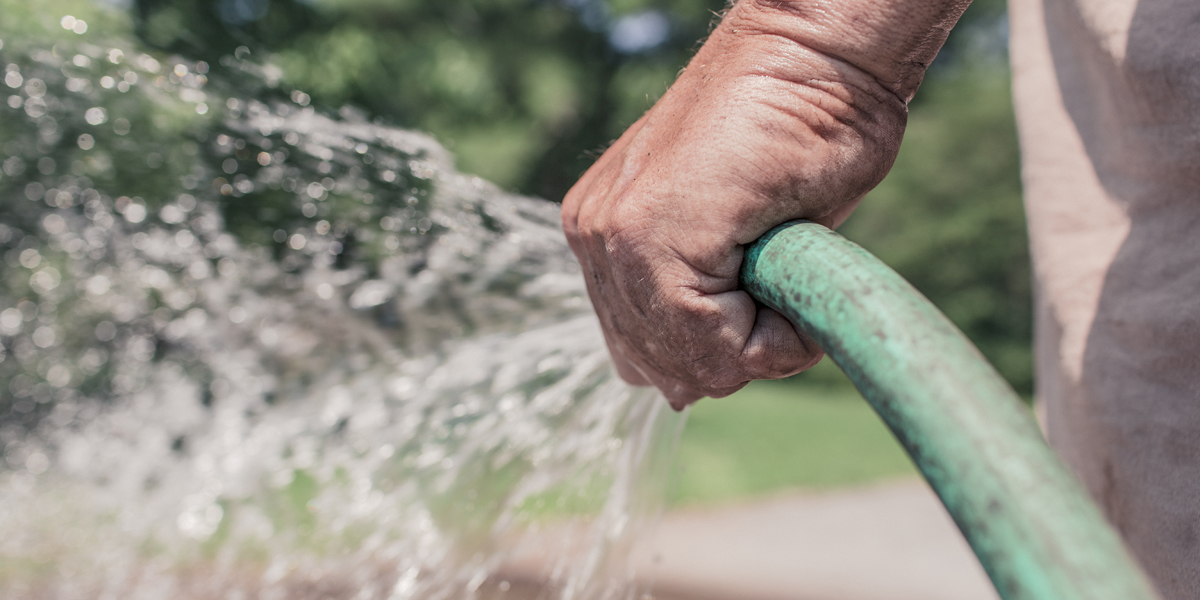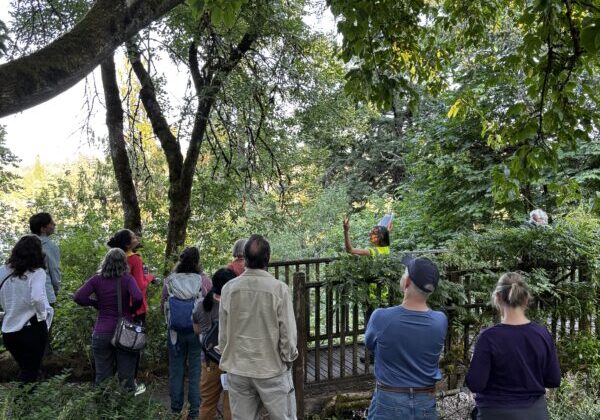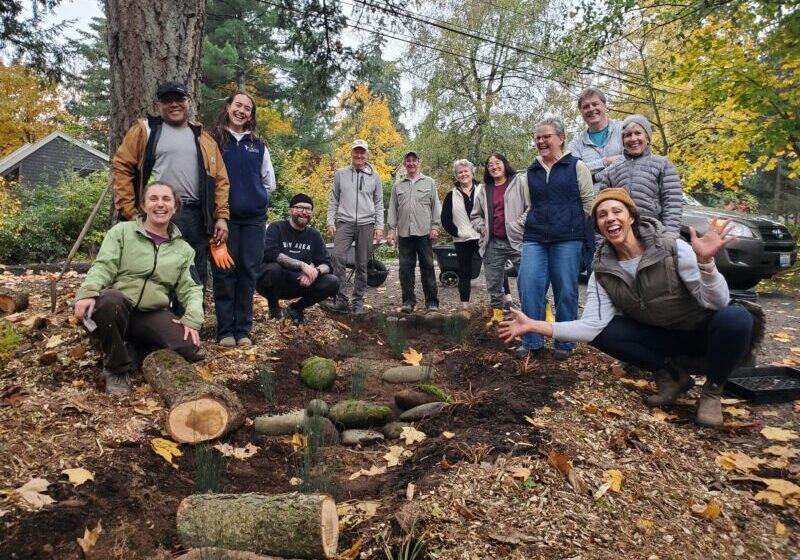When thinking of Oregon, a lush, diverse, green landscape with wet winters and comfortable dry summers may come to mind. But we can all remember the last heatwave and there’s always going to be a next one. We are seeing a change to what is our new normal. Continual heat waves are going to shift and shape Oregon’s landscape. Gardening in this era will bring challenges. Having an understanding of plants and how they use water will make it easier to go about watering and caring for your own garden.
Preparations before, and correct actions during, a heatwave are essential to help native landscapes survive extreme weather.
Choose Native Plants
Selecting native plants will help ensure your landscape survives extreme heat, as well-selected native plants are typically more adapted to our wet winters and dry summers.
OSU Extension offers a great list of water-efficient landscape plants and marks the ones native to Western Oregon. The Native Plants Poster from Portland’s Bureau of Environmental Services is also a great place to find them. We usually hand out these posters at tabling events, if you’d prefer a print version.
Opt for Deep Weekly Watering
In preparation for a heatwave, watering weekly to a depth of at least six inches will help your plants develop deeper root systems that will stay cool and moist in deeper layers of soil. More frequent shallow watering causes plants to develop shallow root systems, because roots don’t need to grow deeper to reach water. Shallow soil lacks moisture and root protection provided by deeper soil layers.
During a heatwave, you may water every day, but after the heat passes, resume with deep watering, to help plants transition back to wet winter weather and to help them rest and come back again the following spring.
Investigate Your Water Source
Understanding the source of your water during a droughtDrought A longer than normal time with not enough rain will help with management of your landscape. If your water comes from a city or town, reaching out to utilities is the best way to figure out how much water you’re able to use. Utilities will also advise on managing household water, which will be equally important during a heatwave emergency.
If you’re using well water, an understanding of the depth of the well will help determine how much water you will be able to use. Shallower wells are more susceptible to droughts than deeper ones, but deeper wells take longer to recover after droughts so being aware of that is important too.
Focus Watering on Priority Plants
Focusing on watering trees and shrubs instead of grasses and perennials will also be more effective long-term than keeping a green lawn. Trees and shrubs are important for maintaining overall landscape temperature and health. They provide cooling shade and food for wildlife during heatwaves and also contribute to overall watershedwatershed an area of land that channels rainfall, snowmelt, and runoff into a common body of water, such as a nearby lake or river. Multiple streams can be part of the same watershed area, such as the Tryon Creek Watershed which is fed by Oak Creek, Park Creek, Falling Creek, and others. health, by preventing soil erosion. When rain returns, trees and shrubs, with their extensive root and mycelium (fungal) network, will help protect the soil from erosion and nutrient loss by binding soil to the land.
When it comes it lawns, it turns out their extreme thirst is just one of the reasons so many folks are ripping out all or parts of their grass in favor of other plants. Our partner Stormwater Stars explains the reasons why, and how to make the switch.
Protect Soils
Retaining moisture is just as important if not more important than creating it. With this in mind, using a heavy layer of mulch – one to two inches deep around flowers, and three to four inches deep for shrubs and trees – will help keep soil moist for longer and also protect shallow root systems.
Dead Leaves Still Make Shade
Creating shade for native plants will also decrease leaf burn and help create temperature relief on hot days. When temperatures do start to moderate, the immediate urge may be to prune off dead leaves, but try to resist! As hard as it may be to look at burnt leaves and brush, leaving them on plants will create natural shade and retain moisture for longer.



